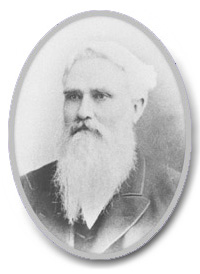John Colton (politician) facts for kids
Quick facts for kids
Sir John Colton
|
|
|---|---|
 |
|
| 13th Premier of South Australia | |
| In office 6 June 1876 – 26 October 1877 |
|
| Monarch | Victoria |
| Governor | Sir Anthony Musgrave |
| Preceded by | James Boucaut |
| Succeeded by | James Boucaut |
| In office 16 June 1884 – 16 June 1885 |
|
| Monarch | Victoria |
| Governor | Sir William Robinson |
| Preceded by | John Cox Bray |
| Succeeded by | John Downer |
| South Australian House of Assembly | |
| In office 1862–1870 Serving with Charles Hewett, John Carr
|
|
| Preceded by | Alexander Anderson |
| Succeeded by | James Stewart |
| Constituency | Noarlunga |
| In office 1875–1878 Serving with John Carr
|
|
| Preceded by | Charles Myles |
| Succeeded by | Thomas Atkinson |
| Constituency | Noarlunga |
| In office 1880–1887 Serving with Thomas Atkinson
|
|
| Preceded by | John Carr |
| Succeeded by | Charles Dashwood |
| Constituency | Noarlunga |
| Personal details | |
| Born | 23 September 1823 Devon, England, United Kingdom |
| Died | 6 February 1902 (aged 78) Adelaide, South Australia, Australia |
| Resting place | West Terrace Cemetery |
| Spouse | |
Sir John Blackler Colton (23 September 1823 – 6 February 1902) was an important Australian politician. He served as the Premier of South Australia, which is like being the leader of the state government. He was also known for his generous work helping others, making him a philanthropist.
Early Life and Business Career
John Colton was born in Devon, England. When he was 16, in December 1839, he moved to South Australia with his family. His parents and siblings settled in McLaren Vale and started a vineyard.
However, John decided to work in Adelaide. At just 19 years old, he started his own business as a saddler. He was very smart, honest, and worked hard. His small shop grew into a very successful business that sold hardware and saddlery. This company, John Colton and Company, continued to grow and change names over many years.
John Colton was also very involved in his church. He gave a lot of money to help build the Pirie Street Wesleyan Church, where he was an active member for over 50 years.
Political Journey
John Colton began his political career in 1859. He was elected to the Adelaide City Council, which helps manage the city. A few years later, in 1862, he was elected to the South Australian House of Assembly. This is like being a member of the state parliament. He represented the area of Noarlunga.
In 1868, he became the Commissioner of Public Works. This role meant he was in charge of big projects like roads and buildings. He later served as the Mayor of Adelaide from 1874 to 1875. In 1875, he became the Treasurer of South Australia, managing the state's money.
On 6 June 1876, John Colton became the Premier of South Australia for the first time. During his time as Premier, his government passed important laws. They made it easier for people to get land and started many public works projects. These included building new railways and improving water supplies. His first term as Premier ended in October 1877.
He became Premier again on 16 June 1884. In this second term, his government passed even more useful laws. These included acts for public health, farming land, and controlling pests. They also introduced a new land and income tax. His government achieved a lot in a short time. However, the hard work took a toll on his health. He had to retire from politics in January 1887 due to illness.
Later Years and Philanthropy
After leaving politics, John Colton visited England to regain his health. When he returned, he dedicated much of his time to helping others. People said that he always helped any charity or society that had a good cause. He often gave money or his personal time.
He was very interested in Prince Alfred College, a school, and served as its treasurer for many years. He also chaired the board of management for the Adelaide hospital for a time. John Colton was a strong supporter of temperance, which means avoiding alcohol. He remained deeply involved with the Methodist Church throughout his life.
For his public service, he was given the honor of being made a Knight Commander of the Order of St Michael and St George (KCMG) on 1 January 1891. Sir John Colton passed away in Adelaide on 6 February 1902.
Family Life
On 4 December 1844, John Colton married Mary Cutting. Lady Colton, as she became known, was also a well-known philanthropist and a supporter of women's right to vote. They had several children, including:
- John William Colton (1848–1906), who worked in the family business.
- Alfred Cutting Colton (1854–1919).
- Edwin Blackler Colton (1859–1916), who became a lawyer.
- Ellen Hannah Colton (1863–1946).
- Frank Septimus Colton (1865–1902), who became a doctor.

